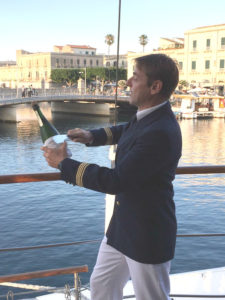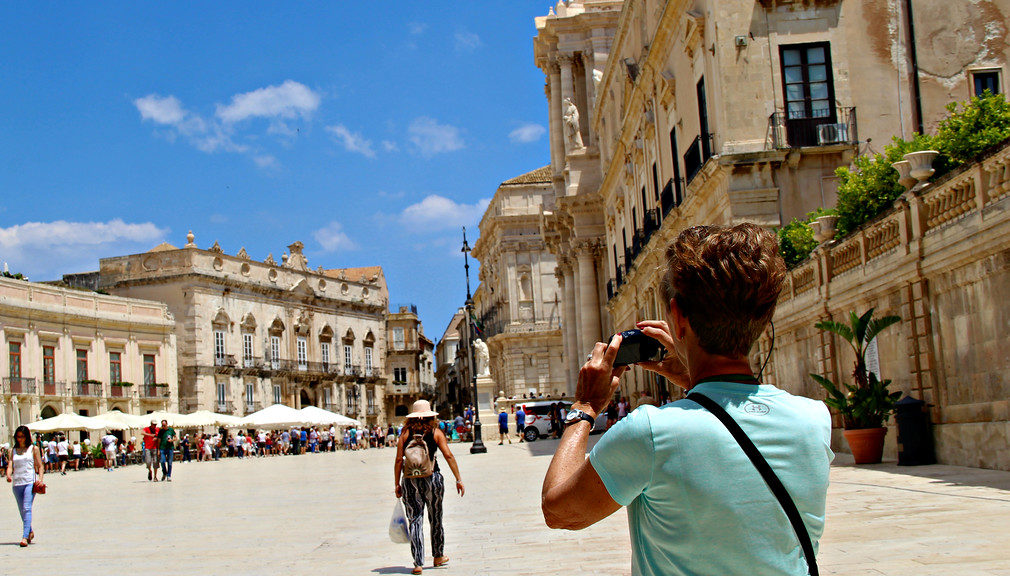
Syracuse (Siracusa)
Our last port of call in Sicily was Siracusa or Syracuse. It has a 2,700 year history and was once a powerful city-state, one of the largest cities in the ancient world. It was founded by Greeks but was also ruled by the Romans. Because my husband is a retired physics teacher, I must mention that Syracuse was the birthplace of Archimedes. He is famous for Archimedes’ Principle, which says that the buoyant force of an object placed in water is equal to the weight of water displaced by the object. He supposedly came to this principle while getting into a bathtub filled to the brim with water. The story goes on to say that upon making this discovery, he ran through the streets of Syracuse while naked shouting “Eureka.” There is a museum dedicated to Archimedes on the nearby island of Ortigia, and while we also enjoyed a walking tour of Ortigia, we did not have the opportunity to visit the museum. The pictures below are ones I took as we approached Syracuse. There is also a picture of a statue of Archimedes sitting in a bathtub which I found on Shutterstock’s website. The statue is actually located at a science museum in Israel, but it went with the story so well, I decided to include it here.
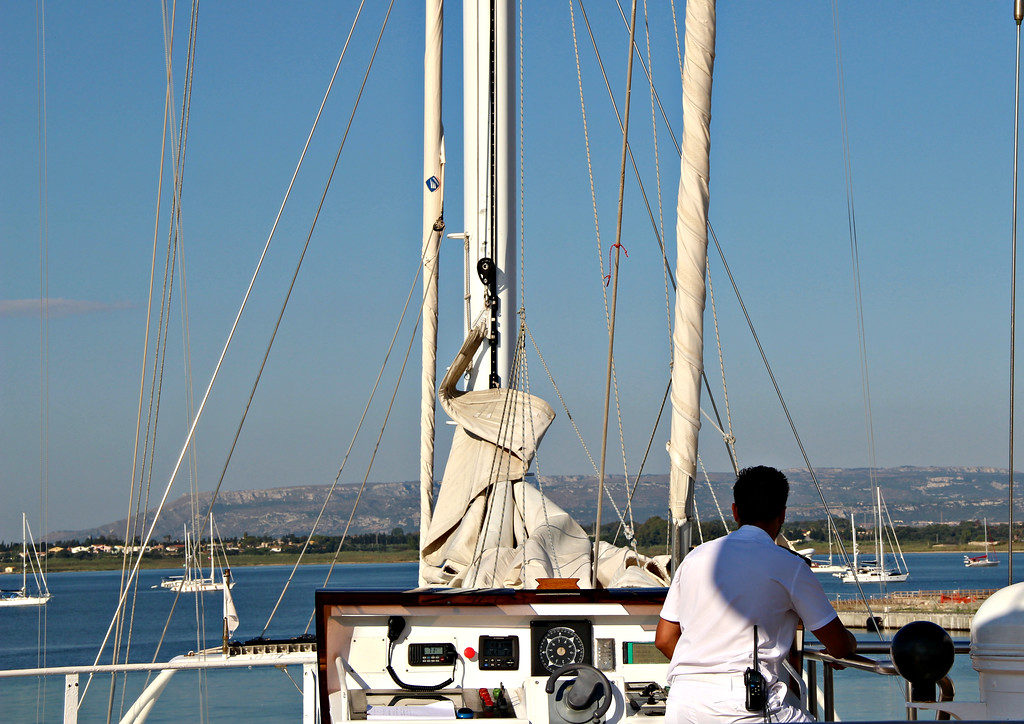
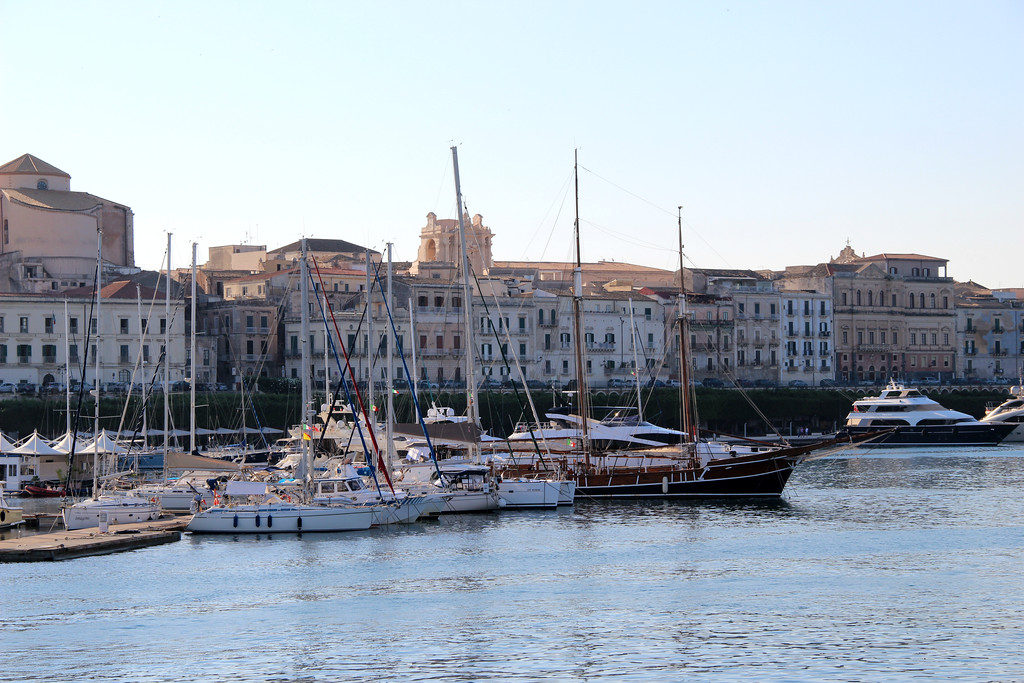

Upon arriving in Syracuse, we first went to the Archeological Park of Neapolis. It is a UNESCO World Heritage Site. Neapolis was once a suburb of Syracuse. The first picture below is of San Nicolo dei Cordari, a 12th Century church dedicated to St. Nicholas. When the population of Syracuse decreased to the point that most people lived on the island of Ortigia, the church was abandoned. After being decommissioned as a church it was given to the cordari. These people were ropemakers – thus the inclusion of Cordari in the church’s name. Underneath the church were water tanks called the Roman Pool. Water went from here through natural pipes to the Roman amphitheater for naval games and water fights. In the 1300’s, at the height of the plague, the area was used as a mass grave. The church underwent some restoration in the 1990’s. Graves dating back to the 1st to 3rd centuries were found. Plexiglass was placed on part of the floor of the church so that some of the skeletons can be seen. Today the church serves as a visitors’ center and museum.
The last two pictures are what remains of the Altar of Hieron. Only the foundation of the altar survives. It is the largest altar from ancient times (75 feet by 650 feet) and is believed to be dedicated to Zeus. Animals were once slaughtered here as a sacrifice – supposedly 450 bulls were sacrificed here in celebration of the overthrow of the tyrant Thrasybulus in 465 BC.
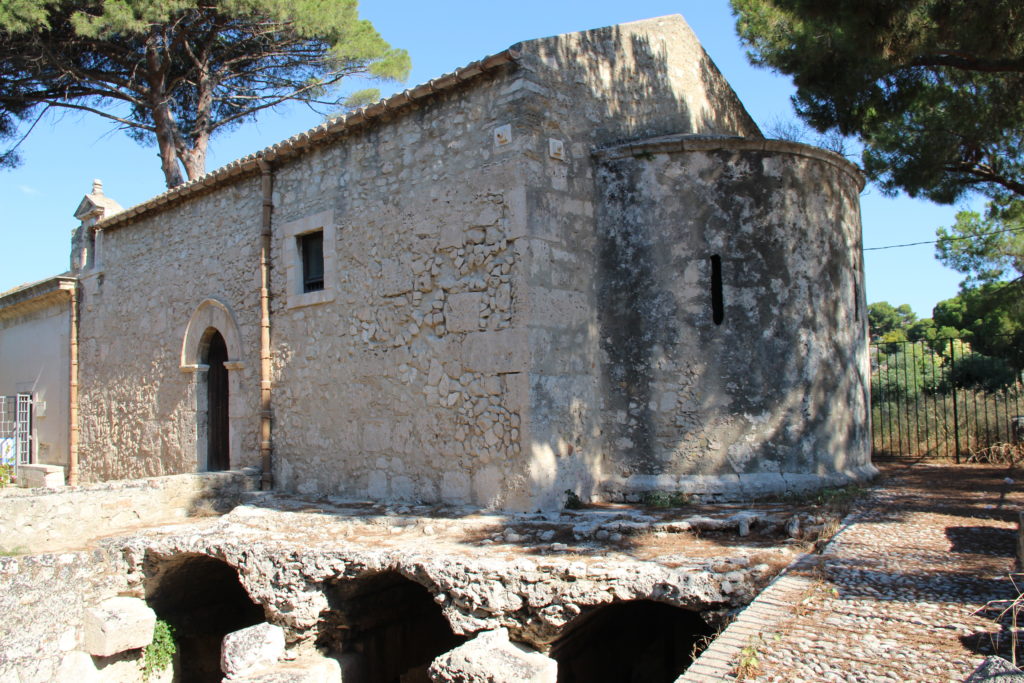
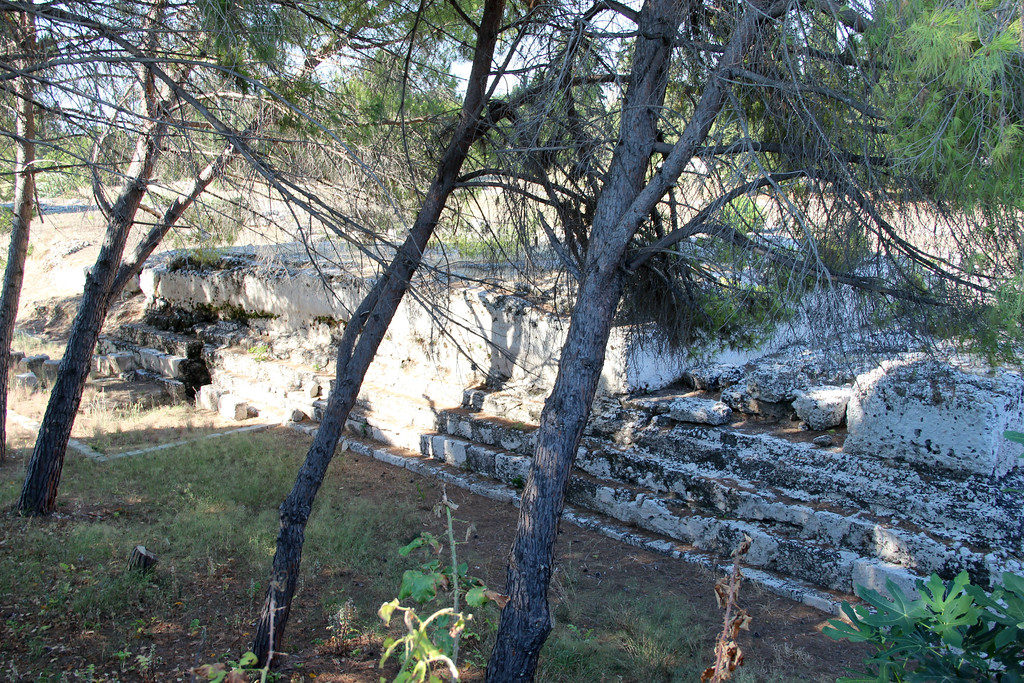

The Archeological Park has three main sections: the Latomia del Paradiso or Paradise Quarry; the Teatro Greco (Greek Theater); and the Roman Amphitheater. The pictures below are of Paradise Quarry. It once supplied the city of Syracuse with limestone for building. There are many catacombs and it was also used as a prison for those captured during the war between Syracuse and Athens in 413BC. There was a kind of ceiling made of the earth which collapsed in an earthquake in 1693. I have included a picture of a surviving column that would have supported this “ceiling.” After the collapse of the ceiling, the area was exposed to sunlight and has since become a garden.
Probably the most well-known feature of Paradise Quarry is Orecchio di Dionisio or the Ear of Dionysos. It is a cave carved out of limestone and is 75 feet tall and extends back into the cliff nearly 213 feet. Dionysos (432-367 BC), who was known as a cruel Greek tyrant, used this cave as a prison for slaves and war prisoners. Because of its acoustics, prisoners could be overheard if they talked of plans for escape. The cave’s name is derived from Dionysos and also from its physical likeness to an ear and its excellent acoustics. We were able to experience the acoustics as our guide sang a song which echoed through the chamber.

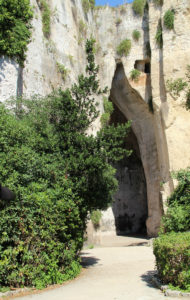

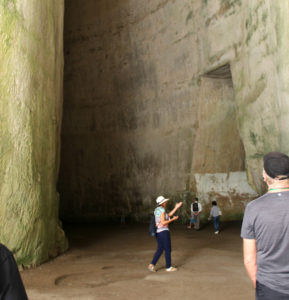
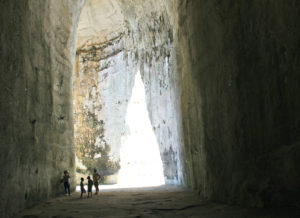
One of the highlights of the Archeological Park is the Teatro Greco, the largest Greek theater in Sicily (and the third largest in the world) with a seating capacity of 16,000. Historians believe the theater dates back to the 5th Century BC. It was renovated in the 3rd Century BC, making it larger and improving the acoustics. Like other Greek theaters, it incorporated the environment – those sitting in the theater could look out at the island of Ortigia and its harbor. The theater is built into the limestone rock of Temenite Hill. It has hosted plays, tragedies and circus performances. Part of the stone was removed during the 16th Century for other building projects, but it is still an impressive structure.
The Istituto Nazionale del Dramma Antico (translated National Institute of Ancient Drama) has performed Greek dramas and comedies here since 1914. The theater season runs from May to July and features three different plays each season. While we visited, workers were setting up for an evening performance of Oedipus at Colonus, written by Sophocles shortly before his death in 406BC. It was likely performed here more than 2,000 years ago. The story describes the end of Oedipus’ life. I have included a picture from a performance of the play which I found on-line.
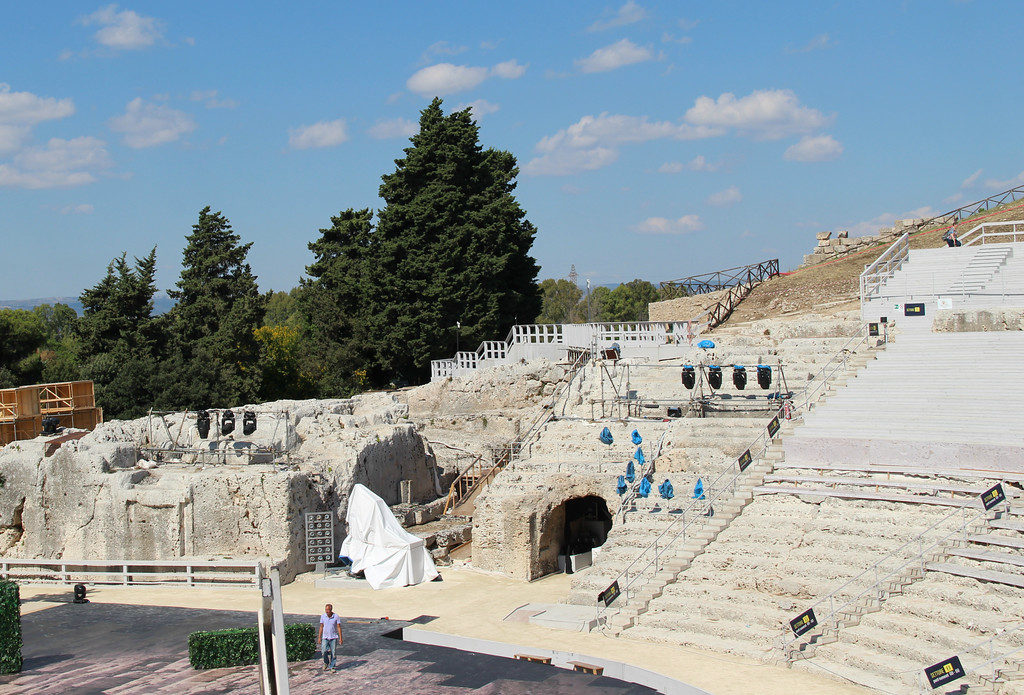
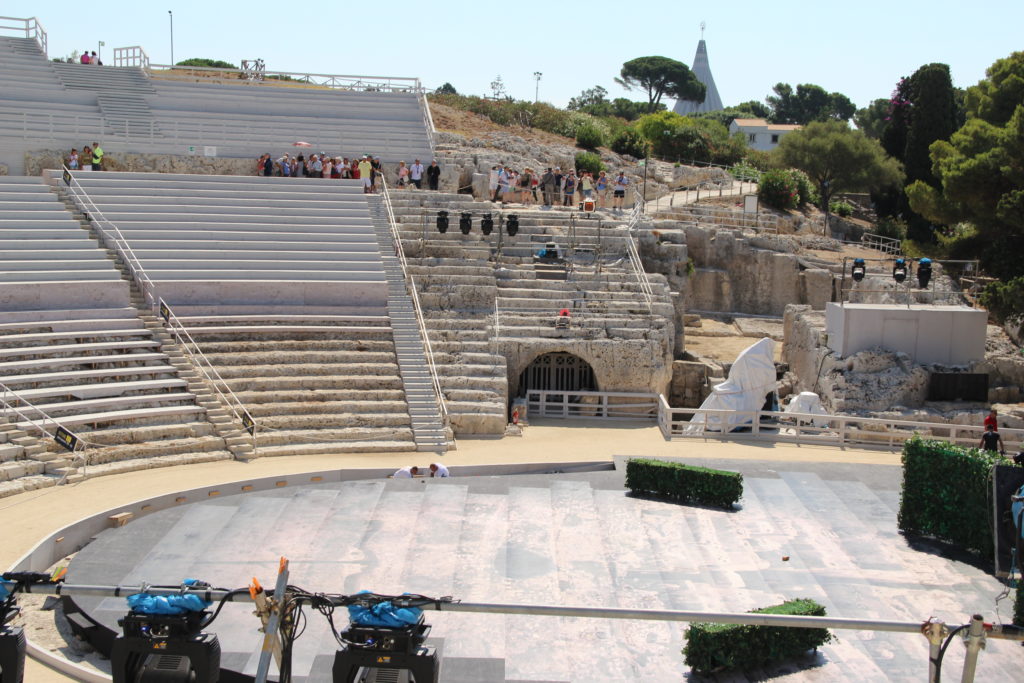
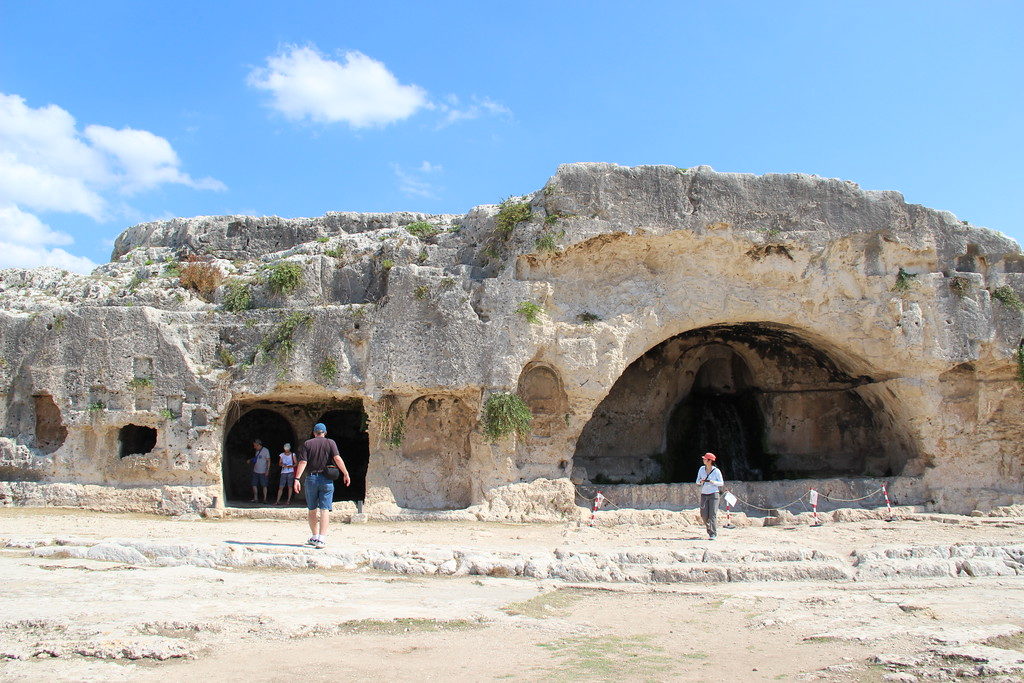
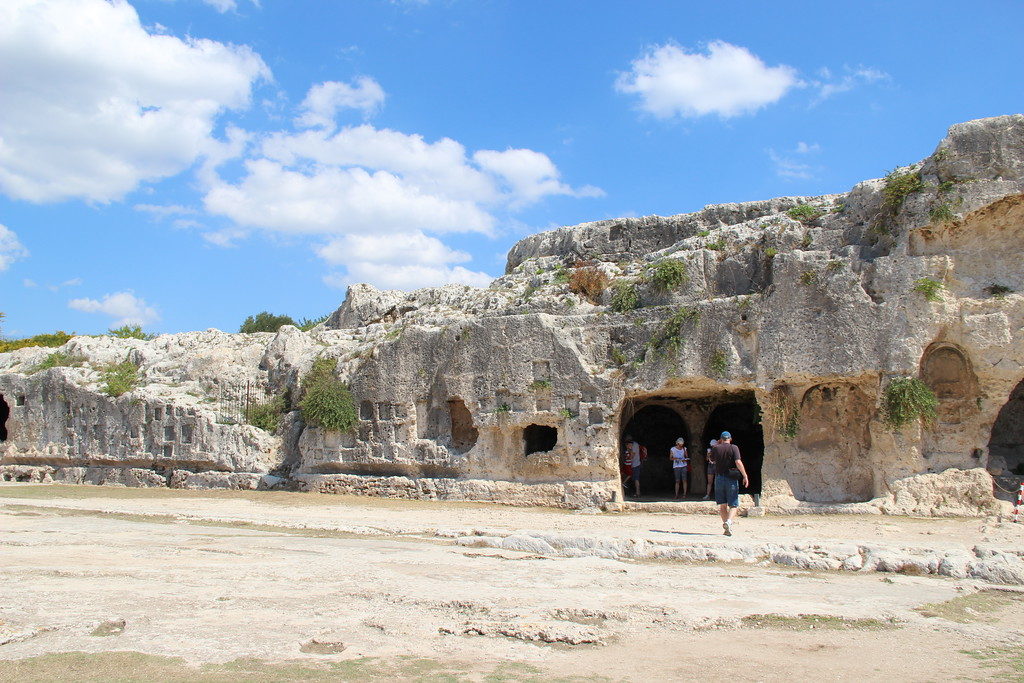

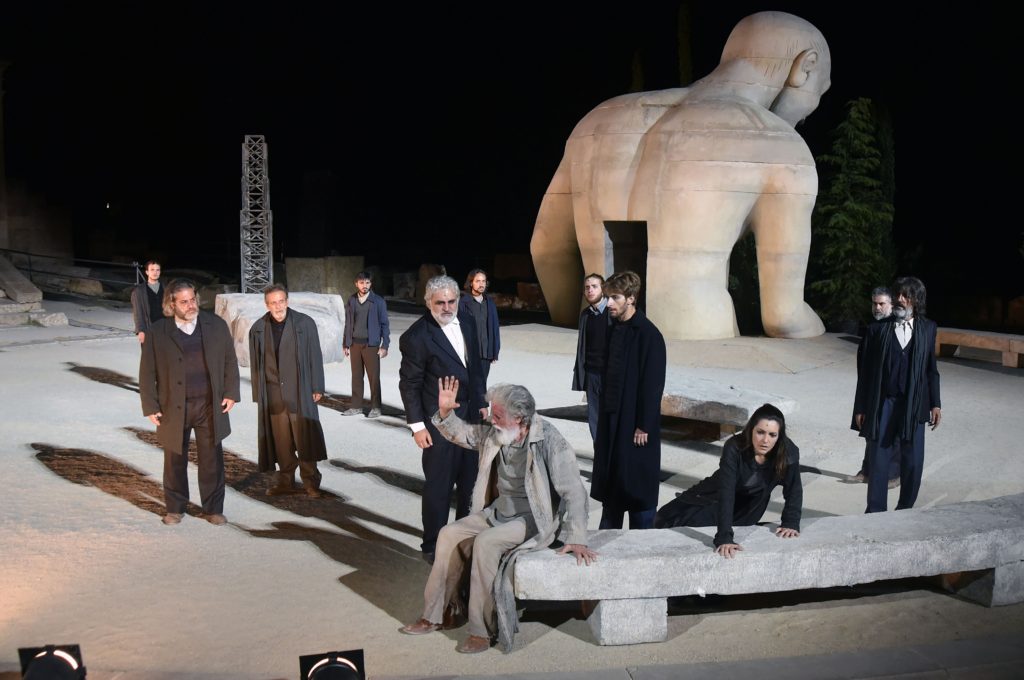
We also saw the Roman Amphitheater, the third section of the Archeological Park. The Amphitheater was likely constructed in the 3rd Century AD. It was one of the largest built – it is about 460 feet long and 390 feet wide. The amphitheater had an underground pit in its center which was originally covered. The pit, which can be seen in the first picture below, was connected to an underground passage that went to an entrance. Machinery – and perhaps animals – needed for performances were brought into the amphitheater in this way. In the second picture, you will see there is a raised platform that separated the amphitheater floor from the seating area. Gladiators would enter through entrances in this area. The lowest seating area was reserved for Roman citizens, the next for wealthy individuals and the highest for the poor. There were originally carved blocks of stone but these were removed by Spaniards in the 16th Century for fortifying Ortigia and Syracuse. While the Greek Theater featured plays, the amphitheater was a place to see gladiators and animal fights.


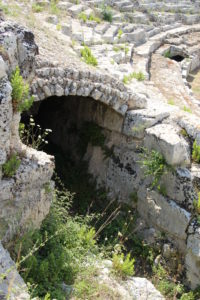
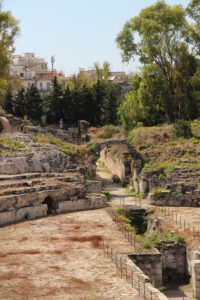
We then left the Archeological Park and went to the island of Ortigia. One of the first things we saw was the Temple of Apollo. The temple is believed to have been built in the early 6th Century BC. It is one of the first temples that had stone columns surrounding the temple area – this became a model for future Greek temples. There have been many renovations to the temple as it transitioned from a Greek temple to a Byzantine church, to a mosque, and then to a Norman church. These renovations caused considered damage through the years. As other structures were built, part of the temple was actually incorporated into Spanish barracks and ultimately a home. The home owner was kind enough to let people into his home to view the columns, but the Municipal Antiquities and Fine Arts Commission ultimately took possession of the home which was destroyed so the temple ruins could be viewed. These ruins can be seen in the pictures below. The second picture shows the remains of the colonnade which would have surrounded the temple area. The last picture is part of the columns that have survived these many years.
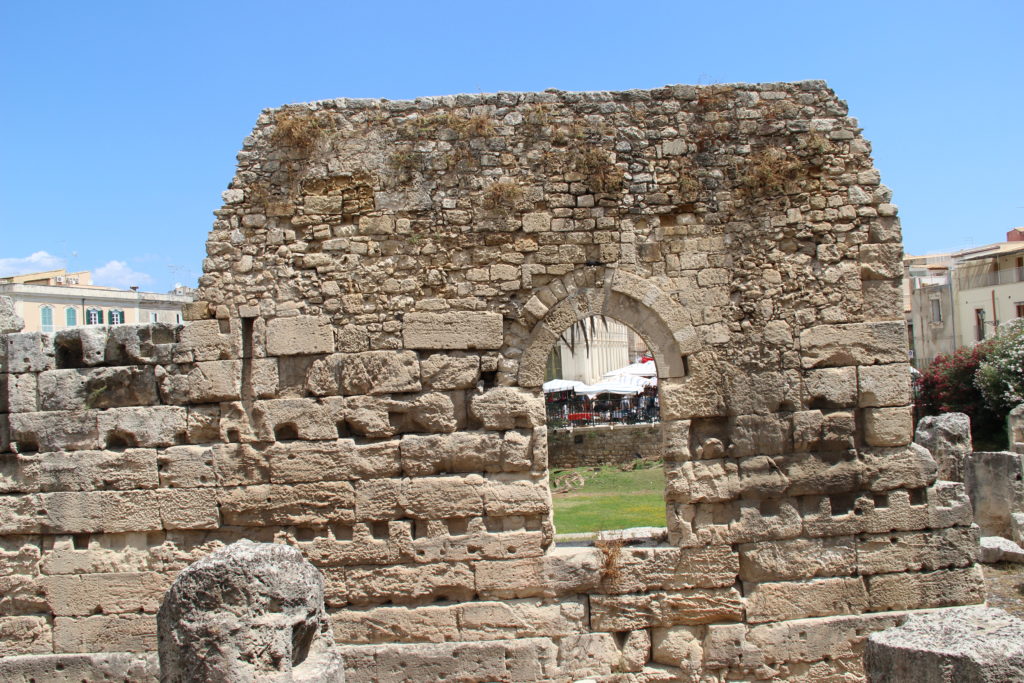

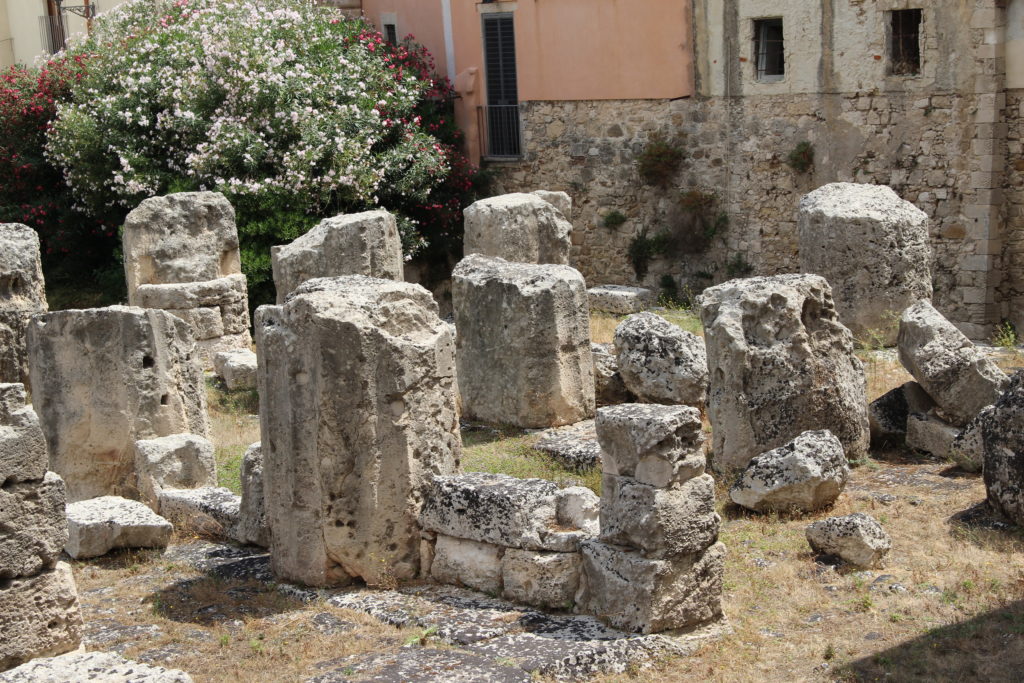

The island of Ortigia was settled before mainland Siracusa. Their website says it was settled as early as the 14th Century BC by Sicilians and Phoenicians. We walked some of the quaint streets on the island of Ortigia and wound our way around to the Piazza Minerva (second picture below). It is considered one of the most beautiful squares in Italy. There were several beautiful buildings on the square. The third picture is of the Town Hall.
The next pictures (fourth, fifth and sixth) are of the Syracuse Cathedral, commonly called the Duomo. It was built in the 7th Century. It integrated part of the Temple of Athena, built in the 5th Century BC, into the structure. Some of the columns from the Temple of Athena were saved. Our tour did not take us inside the Duomo but I did find an interior picture that shows some of these original columns (sixth picture). There is also a column visible on the exterior of the Duomo. If you have the opportunity to go inside, it would probably be time well spent.
The next picture of the older church, and the picture that follows, is a church in honor of Saint Lucia, the patron saint of Syracuse. She was martyred after declaring her Christian faith and was originally buried near the Church of Saint Lucia (her grave is now in Venice). A church was built at the site “in ancient times” but was destroyed by an earthquake. The present church was completed in 1705. The balcony on the outer facade is not original to the church – that one was used as scrap metal during World War II. The present balcony was taken from another location and “recycled.” The Feast of the Patron Saint is celebrated in December with people from all over Sicily (as well as delegations from the United States and Argentina) coming for the celebration.
The last picture is of one of the bridges that connects the island of Ortigia to Syracuse.
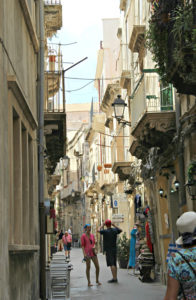
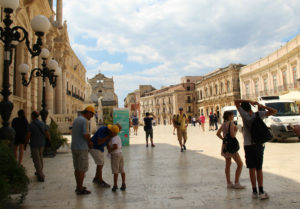

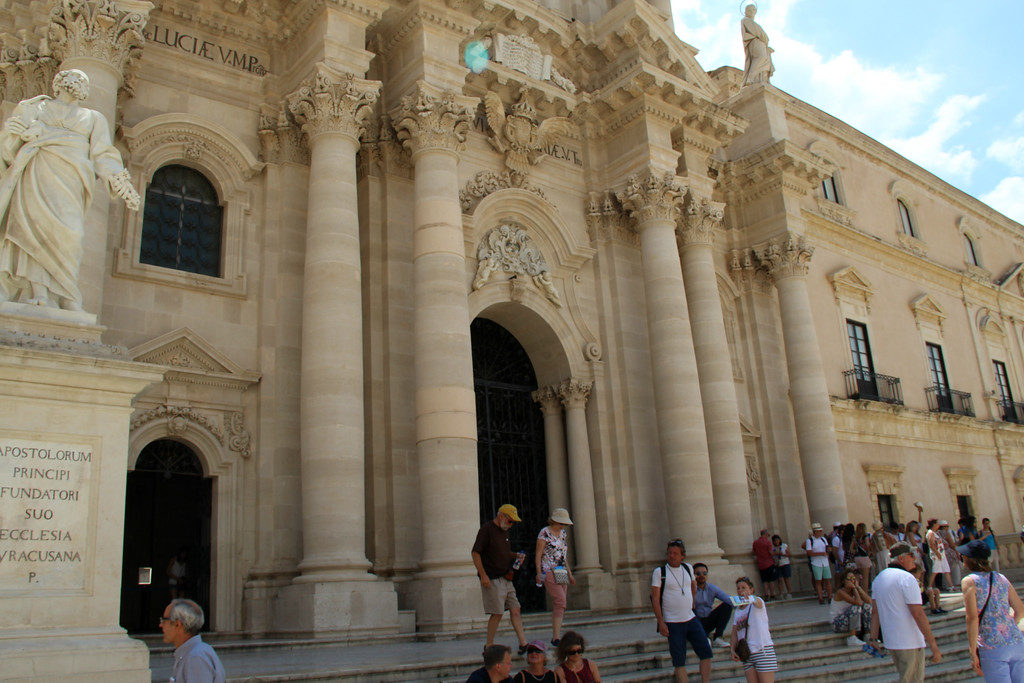

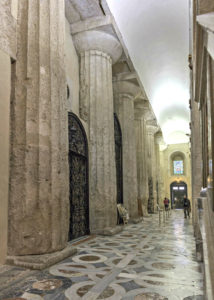
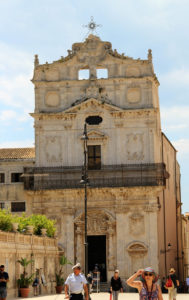

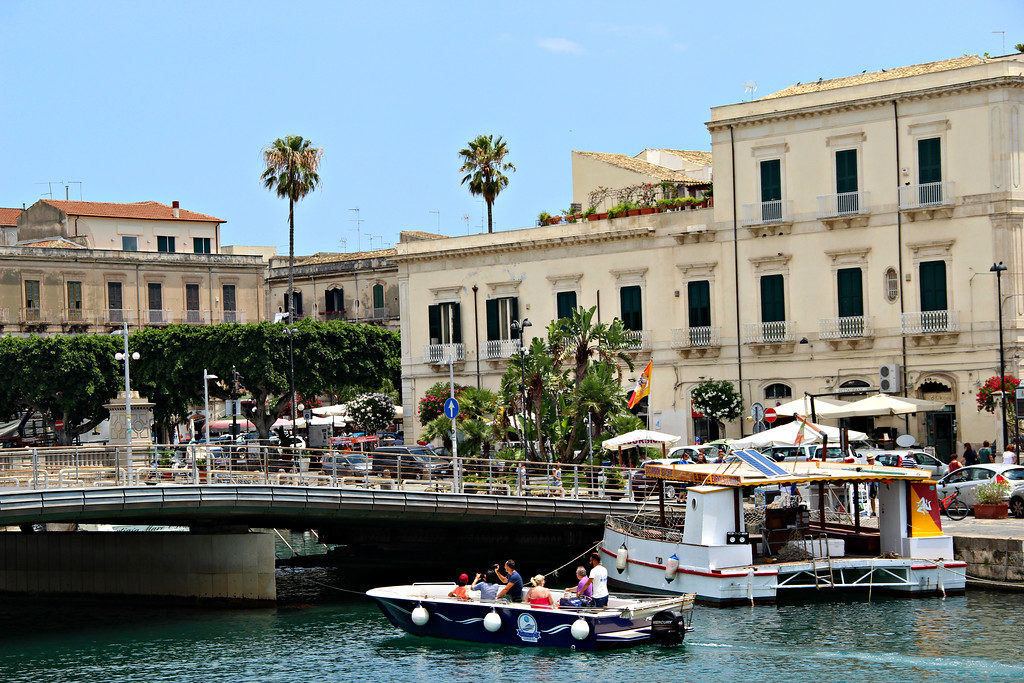
Once on board the ship, we set course for Malta where we would disembark. But first there were celebratory activities. Our captain opened a bottle of champagne with a large knife. I wasn’t quick enough to get a picture, but a fellow traveler, Larry, was successful. My thanks to Larry and his wife, Rene, for sharing the picture. The passengers and crew toasted each other and we were then served the Captain’s Farewell Dinner. We truly enjoyed our time aboard the Le Ponant. The crew was most gracious and our fellow passengers a lot of fun. All the destinations we saw were great – but our time on board was also a wonderful part of our trip.
